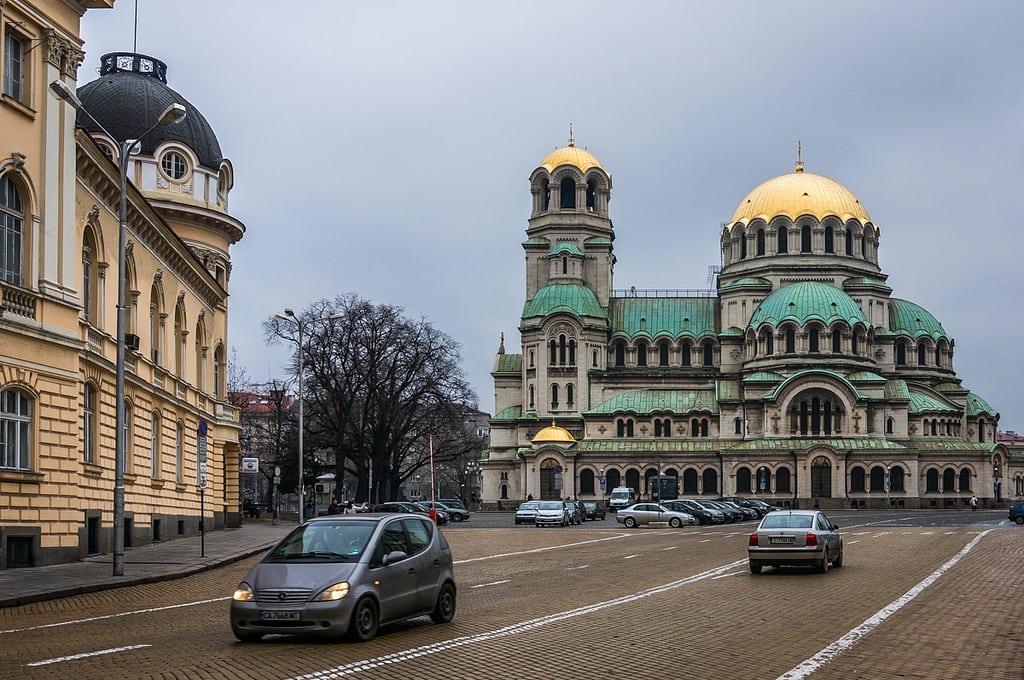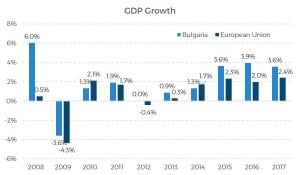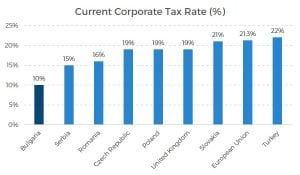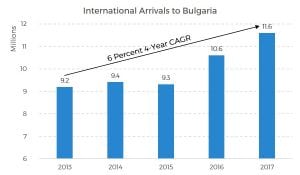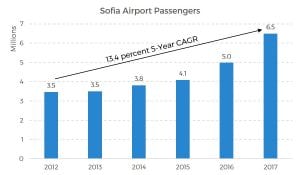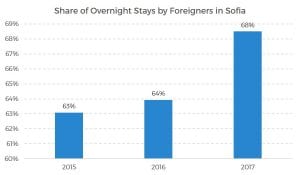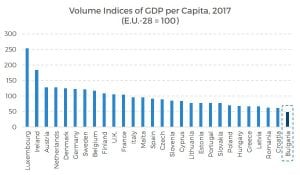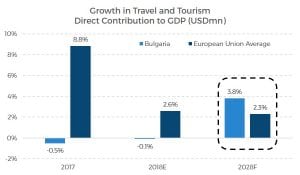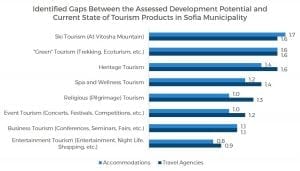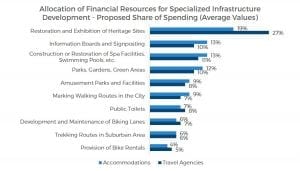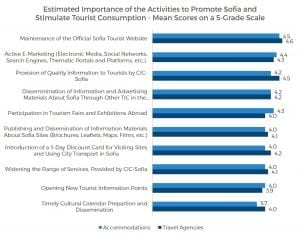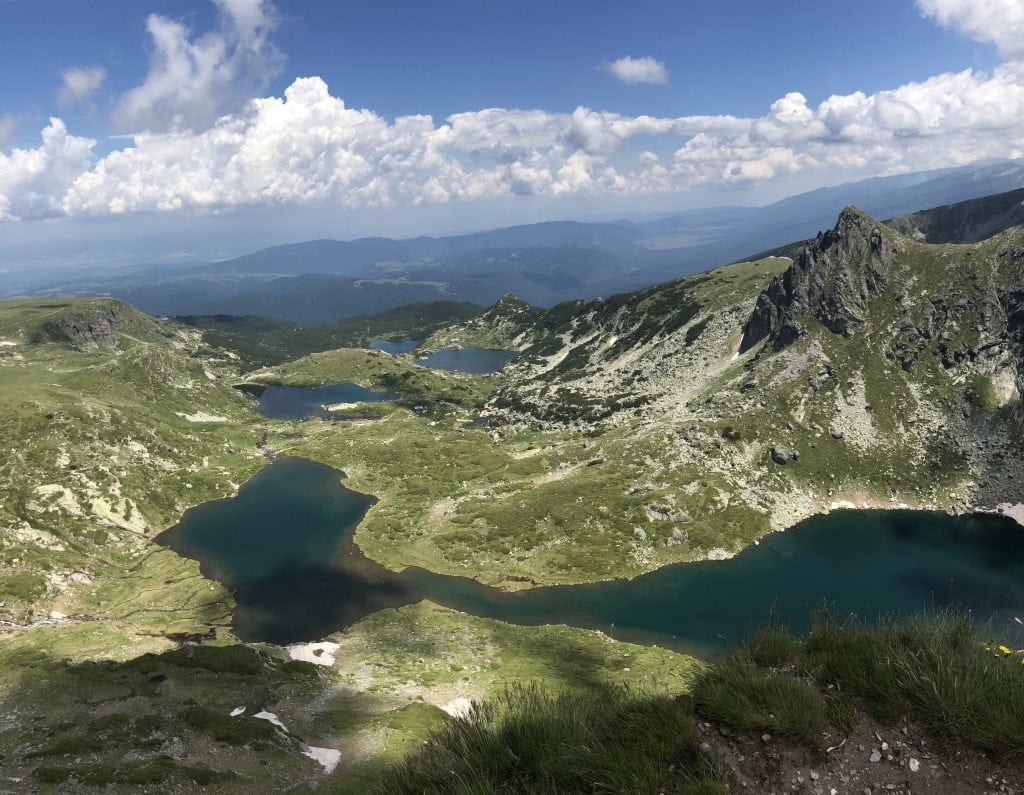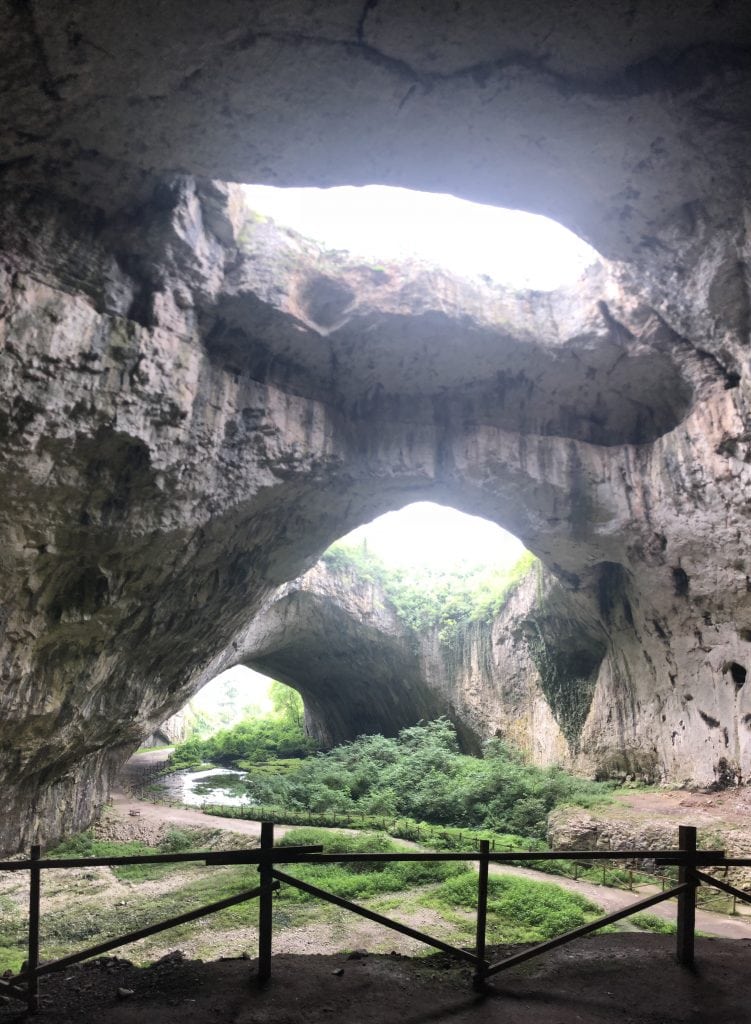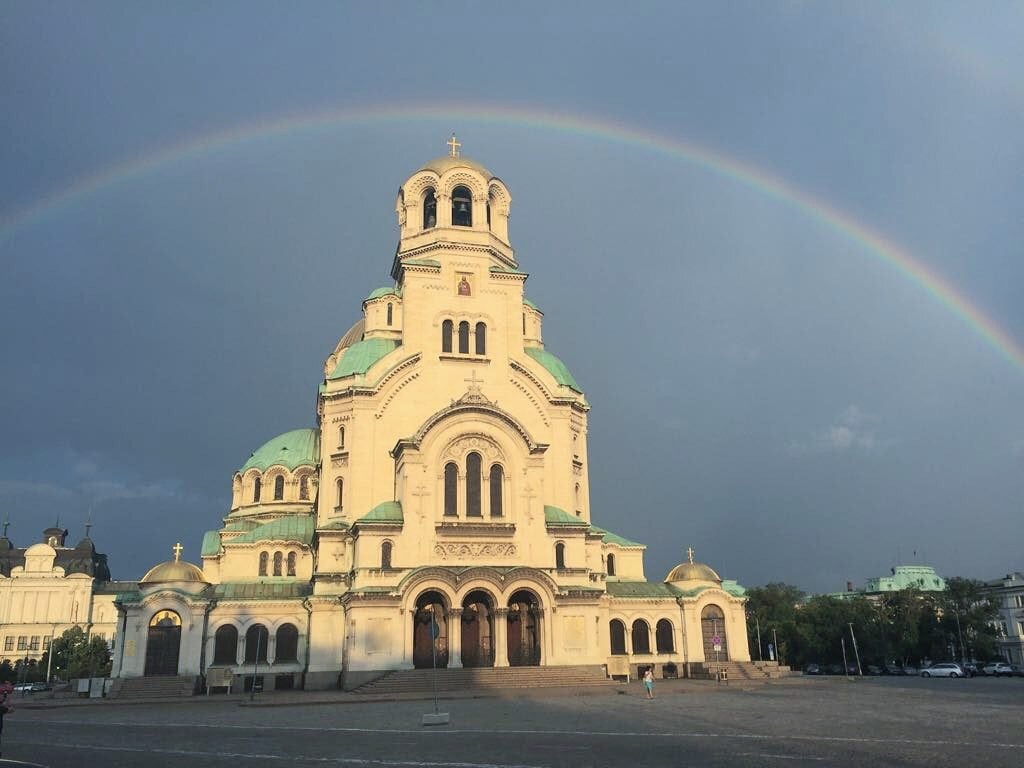Skift Take
While destinations with overtourism issues are getting a lot of attention, other cities are emerging as new frontiers for tourism. Sofia, Bulgaria, is one of those cities with a unique opportunity to declare to the world what it wants to be as a destination, and to define a vision and strategy for how tourism can develop sustainably.
Skift Senior Research Analyst Rebecca Stone is traveling the globe over the next year as part of Remote Year, a program that brings together working professionals to travel, live, and work remotely. She'll spend a month in 12 cities around the world that include Cape Town, Lisbon, Valencia, Sofia, Hanoi, Chiang Mai, Kyoto, Kuala Lumpur, Lima, Medellin, Bogotà, and Mexico City. And every month she'll take you along for part of the journey with a feature about her observations based on firsthand reporting and data about the changing travel industry. She'll do the jet lag. All you have to do is kick back and enjoy her compelling dispatches.
I’d be lying if I said I knew much of anything about Sofia, the capital of Bulgaria located in the western part of the Balkan country, before a few weeks ago.
When I found out I was going to be heading there, I admit I embarrassingly went straight to Google Maps to figure out exactly where it was in Europe.
After some research, I had a basic, black and white image in my head. North of Greece. Has a border on the Black Sea. Allied with the Axis powers during World War II. Under a Communist regime until 1989. Got it.
However, upon arriving to Sofia, that image was suddenly no longer black and white.
Gorgeous, whitewashed governmental offices built during the Communist regime stood formidably before me speaking to a history of which I knew very little. Countless brand-new boutique shops, outdoor beer gardens, and trendy, hipster restaurants made up almost the entire ground floor of the city, juxtaposing the grungy, grimy buildings in which they were housed. Locals with somber dispositions smoked cigarettes leisurely in Sofia’s lovely parks while bright-eyed, fashionable millennials strutted down broken sidewalks as if they were in New York’s SoHo neighborhood. All the while, Vitosha Mountain stood proudly visible in the background, just begging to be hiked and explored.
How had I never known that there was so much to do and see and learn in Sofia, Bulgaria? Where did the people of Sofia get their tough, this-is-who-I-am, take-it-or-leave-it mentality that blended somehow effortlessly with their easy-going, kind personalities? How did the city develop in such a contrasting sort of way, with haphazard modernity breaking out of a complex past?
Bulgaria has had to go through economical and political puberty much faster and more tumultuously than many other nations without really having a game plan in mind for who it wants to be when it grows up. In Sofia, specifically, I could immediately sense how a turbulent history and an ever-changing political environment can impact a destination’s development, culture, and ambience.
Nevertheless, as Sofia continues to grow and develop as a key destination in the emerging “New Europe,” its vitality and its dynamism as a destination will only become stronger and more apparent, and an appropriate vision for tourism in the city must be implemented. With so many other destinations dealing with tourists running rampant and altering cultural identities, Sofia has a completely unique opportunity to declare to the world what it wants to be as a city and as a destination for others to come enjoy, experience, and better understand.
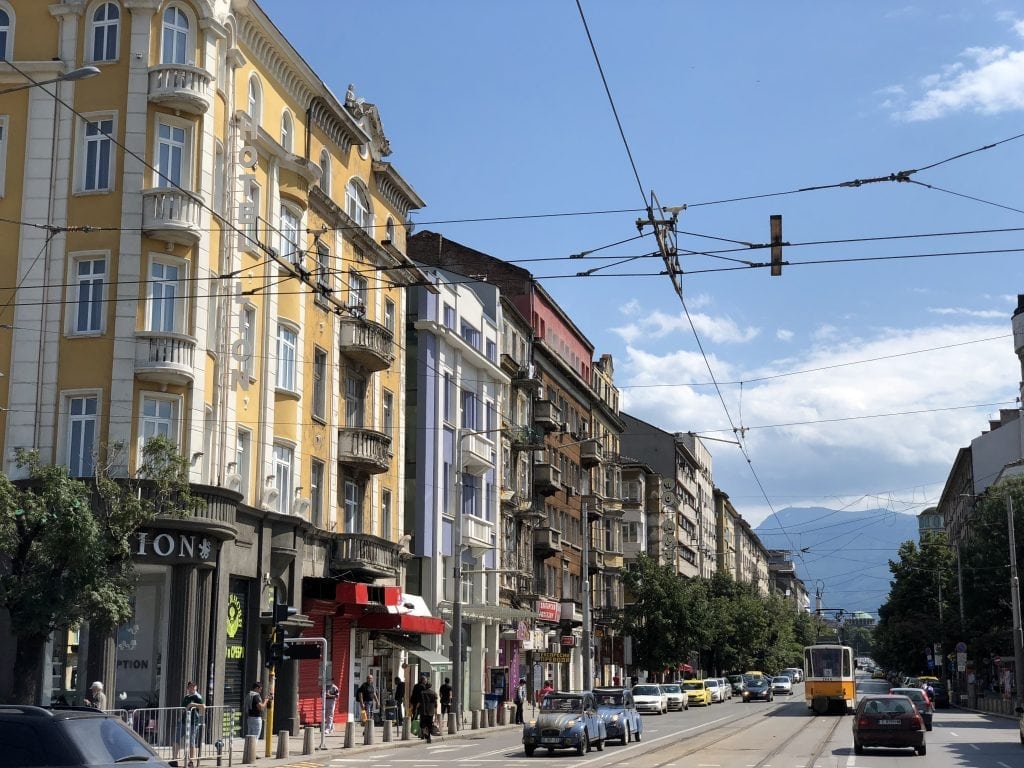
Sofia, a vibrant, developing city, with the Balkans in the distance, offers so much for visitors to enjoy and learn.
Economic Growth out of a Turbulent Past
Sofia may be one of the most ancient cities in Europe, but let me lamentably skip thousands of years and bring you straight to the end of World War II. The Soviet Armed Forces invaded Bulgaria in September 1944 in what was generally considered to be a welcomed liberation from the Nazis and subsequently installed a Communist regime that lasted until 1989. With the fall of the Berlin Wall in Germany, Bulgaria’s 35-year reigning Communist leader, Todor Zhikov, was ousted. Bulgaria moved towards setting up a Democracy with a multi-party system. The Communist party renamed itself the Bulgarian Socialist Party, and then proceeded to win a majority of seats in the first free elections in June 1990. Change can be hard sometimes.
Nevertheless, Bulgaria’s economic development did nothing but accelerate from there. According to the World Bank, annual GDP growth in Bulgaria has outpaced that of the European Union in 17 out of the past 20 years, with a 20-year average growth rate of 3.1 percent versus the European Union at 1.7 percent. The country became a member of NATO in 2004 and the European Union (E.U.) in 2007. In 2017, GDP growth of 3.6 percent compared to that of the European Union at 2.4 percent. Today, Bulgaria has the third-lowest government-debt-to-GDP ratio in the E.U. (approximately 25 percent), an unemployment rate of 5 percent versus 7 percent in the E.U., and the lowest corporate tax rate in the E.U. at 10 percent. The country is even in the top 10 for fastest internet speeds in the world.
Source: World Bank
Source: Trading Economics
What generally comes with more economic growth post the falling of a Communist regime? Growth in tourism. Travelers are beginning to flock to Bulgaria, with international arrivals to Bulgaria coming in at 11.6 million in 2017, and growing at a 6 percent compounded annual growth rate (CAGR) over the past four years. In Sofia specifically, 6.5 million passengers passed through the Sofia Airport in 2017, representing a 13.4 percent five-year CAGR, driven primarily by increasing capacity from low-budget airlines such as Wizz Air and Ryanair. Overnight stays by foreign visitors in Sofia continue to increase, coming in at 68 percent of stays in 2017 versus 63 percent in 2015.
Source: National Statistical Institute, Republic of Bulgaria
Source: Sofia Airport
Source: Visit Sofia, Tourism in Figures, Edition 2018
Travelers are generally pleasantly surprised upon arriving to Sofia to find out what a well-rounded destination it is, complete with mountains for skiing or hiking, beaches within driving distance, cultural and historical opportunities, and awesome food. “We are still an exotic destination for some people,” commented general manager Petrana Grahliova of Arena di Serdica, a five-star boutique hotel located in downtown Sofia that features ruins of the Roman Amphitheater of Serdica in the ground floor of its lobby. “They don’t know what to expect here … [and] we are exceeding their expectations.”
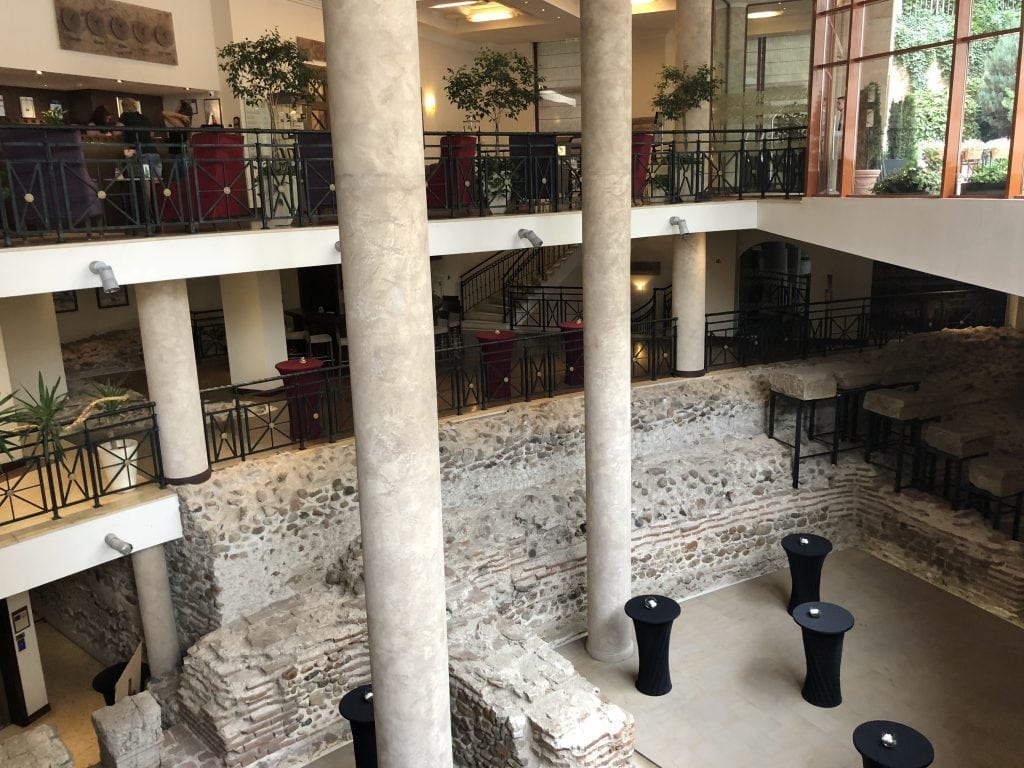
Attractions in Sofia generally exceed visitors’ expectations, like the Arena di Serdica hotel which features ruins of the Roman Amphitheater of Serdica in the ground floor of its lobby.
Not Everything is Black and White
While you may think I’m painting a rosy picture of economic development, not everything is so black and white. Bulgaria still remains the poorest country in the E.U., as measured by GDP per capita. Three friends and I stayed in a town called Vratsa during a wonderful weekend spent exploring Bulgaria’s incredible caves, only later to find out that the city is located in the poorest region of the poorest nation in the European Union. We couldn’t help but feel guilty when a huge, delicious dinner in Vratsa at Pintata, consisting of numerous appetizers, entrees, wine, and dessert came out to be just $45 in total.
In addition, according to the 2017 Corruption Perceptions Index, Bulgaria ranks as the most corrupt E.U. nation. The U.N. predicts Bulgaria’s population will fall from 7.2 million to 5.2 million by 2050. Ongoing disillusionment abounds, and governmental paralysis continues to affect local sentiment. Not everything is as perfect as it seems.
Source: Eurostat
Growing up in the United States, we were taught in school that Democracy is good; Communism is bad. Simple as that.
But, upon coming to Sofia, you realize that not everything is black and white. Opinions remain divided to this day about the time period leading up to 1989. Some Bulgarians look back, remembering “the good old times” when education was free, healthcare was free, and there was virtually no unemployment (We’ll ignore the deficit that was built during that time for a moment). Those times were simpler, less complicated. Bulgaria could be Bulgaria.
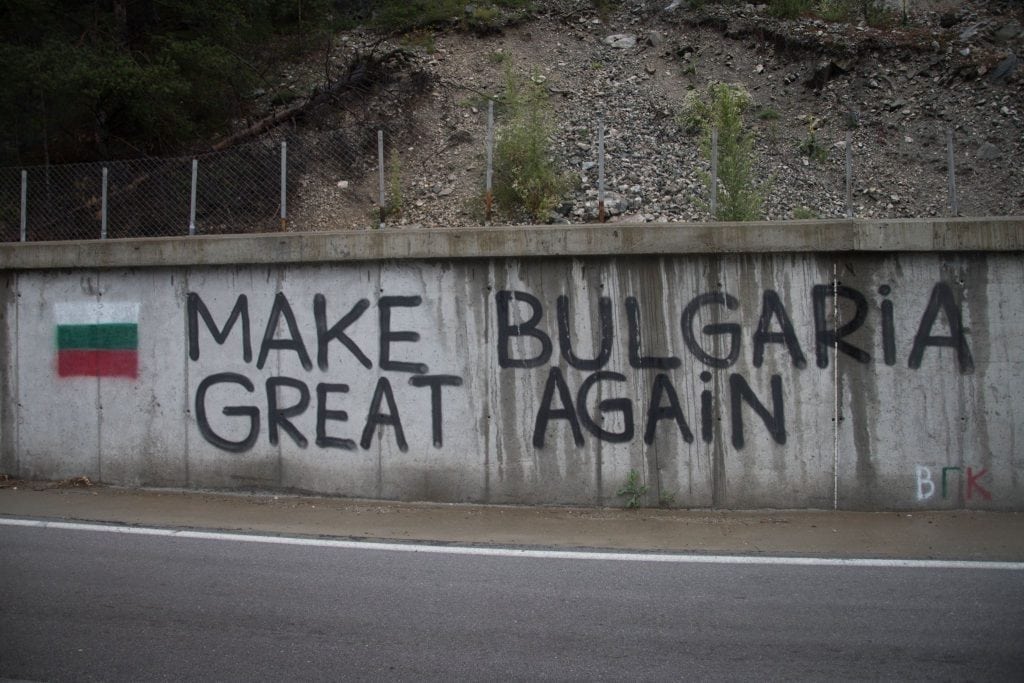
While Bulgaria is certainly growing, opinions on its development remain divided. Not everything is black and white. Photographer: David April
Even now, the Bulgarian Socialist Party is still the second most popular political party in the current government, with 27.2 percent of the vote, even more than in 2014 at 15.4 percent. The Center for Strategic and International Studies found that Russia’s economic presence in Bulgaria averaged over 22 percent of GDP between 2005 and 2014.
When I passed by the Largo area, featuring buildings built by Communists but used by the government today, I could still make out the faint lines of where red stars used to be on the Presidency building. When I jogged laps around the Monument to the Soviet Army, I recognized how some citizens view it as a difficult reminder of the country’s past while others revere it as a World War II memorial honoring Bulgarians who lost their lives. When I walked by the Bronze House sculpture, I couldn’t help but wonder if the 1999 demolition of the former mausoleum which once stood there housing the embalmed remains of Bulgaria’s first Communist leader, Georgi Dimitrov, was perhaps a somewhat hasty measure to impossibly eradicate traces of Sofia’s past.
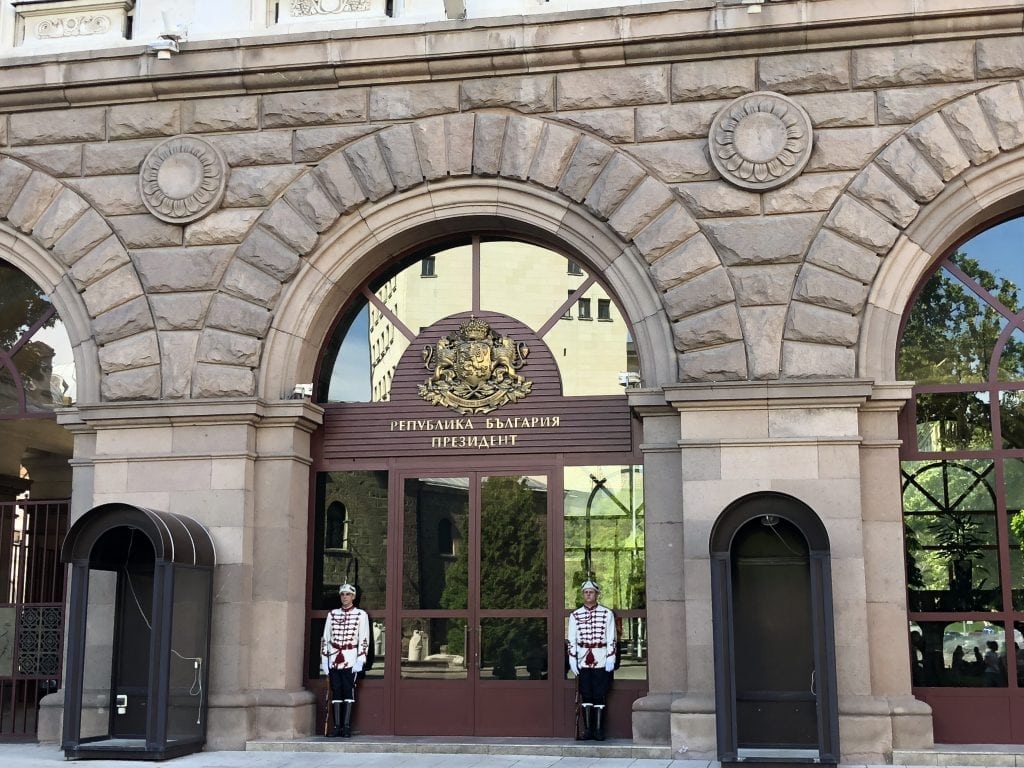
One can just barely make out the faint lines of what used to be red stars in the circles between the arches of the Presidency Building.
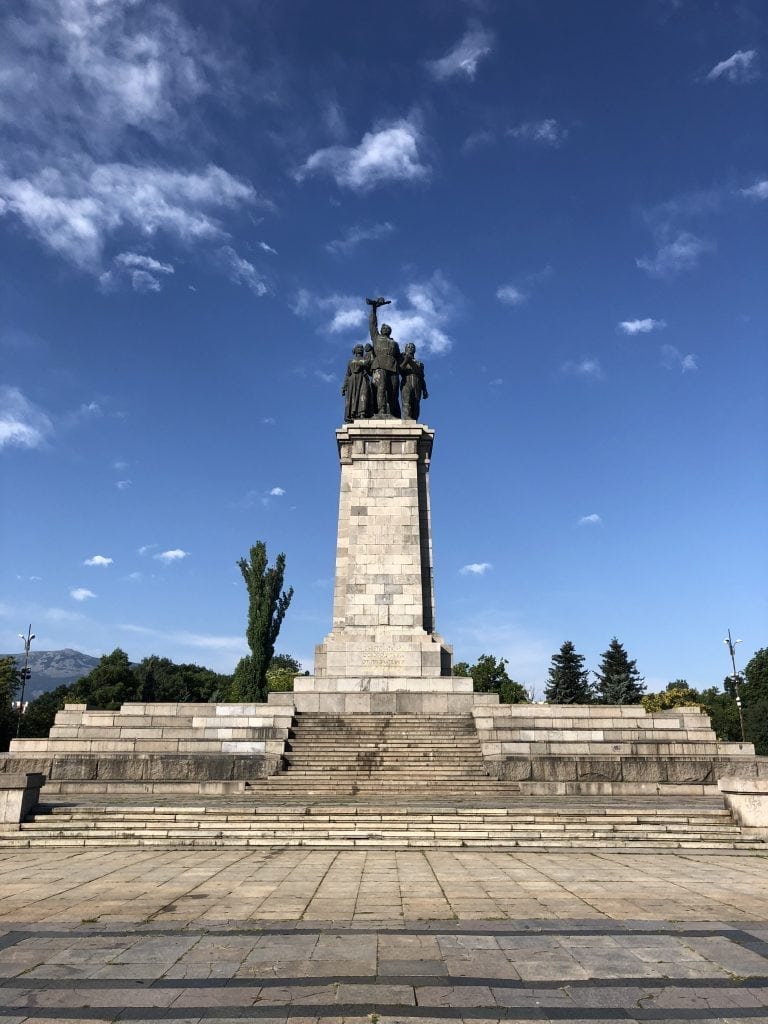
The Monument to the Soviet Army, featuring a Red Army soldier flanked by a Bulgarian woman and child and the working, common man, is now a regular hangout place for teenagers by day and graffiti artists by night.
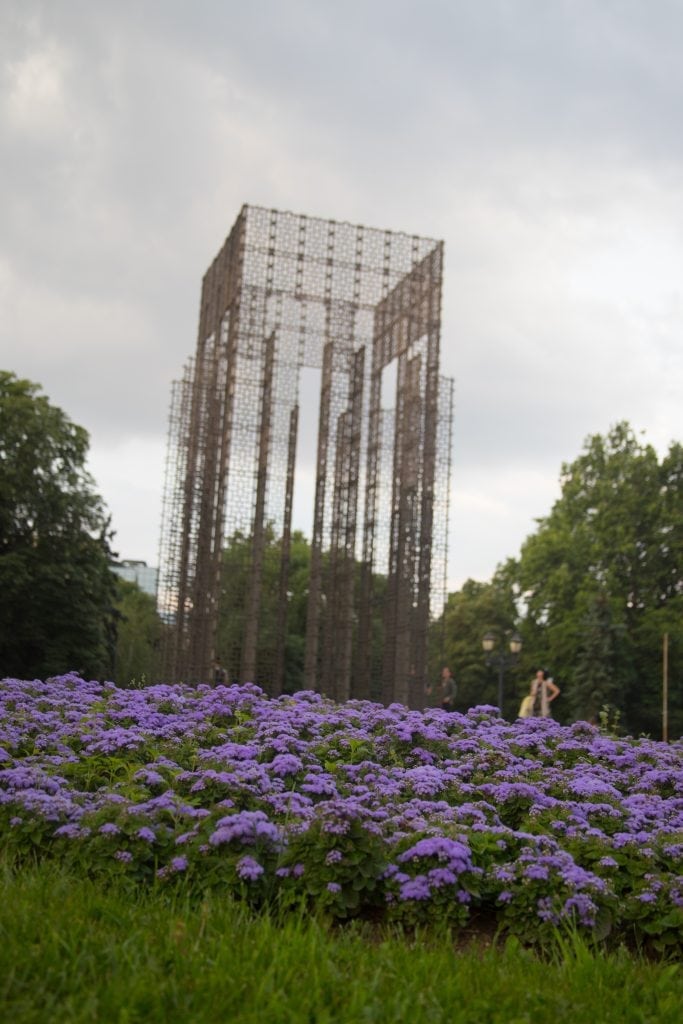
The Bronze House sculpture commemorates Bulgaria’s rotating presidency of the E.U. Council in 2018, but stands in the place of a former mausoleum for Bulgaria’s first Communist leader, Georgi Dimitrov. Photographer: David April
Opportunity for Growth in Tourism
But it is this exact not-so-black-and-white dynamism of Sofia that make the city an even more interesting destination for travelers seeking contrast, new experiences, and a place that makes them think that it isn’t completely overrun by tourists. There’s still an “undiscovered” aspect to Sofia that you only realize upon arriving that there is so much to do and experience.
As of now, tourism remains underpenetrated in the market. When I visited the Alexander Nevsky Cathedral on a Saturday afternoon in July, I could barely believe that I was one of no more than 10 visitors in the entire cathedral. The United States accounts for only 4.7 percent of foreign guests to Sofia and 0.8 percent for all of Bulgaria. The average stay for all tourists is less than two days, and the average occupancy in Sofia was 38.7 percent in 2017 (though an increase versus 31.8 percent in 2016). There is clearly enough capacity to keep up with the current level of demand.
However, tourism is going to continue to grow considerably and will become increasingly important to the point where it can no longer be ignored. The WTTC forecasts travel and tourism’s direct contribution to Bulgaria’s GDP will grow at 10-year annualized rate of 3.8 percent from 2018 to 2028. This compares to 2.3 percent on average for the European Union. The government has to start paying attention.
Source: WTTC Travel and Tourism Economic Impact 2018 Bulgaria
Note: 2028F represents the annualized growth rate 2018 to 2028. 2018 and 2017 represent year-over-year changes.
In recognition of the potential opportunity for tourism in the city, the government has already been implementing some much-needed infrastructure. “The last three or four years, the Sofia municipality has made a lot of things about cultural tourism here,” Zhivko Zhelyazkov, general manager of the Central Hotel Sofia, commented. There’s “the new line for the metro, [which is] very convenient, [and] they put up labels for tourist attractions in the center.” The city has opened seven public museums and galleries since 2011, including the important Ancient Serdica Complex and the Socialist Art Museum.
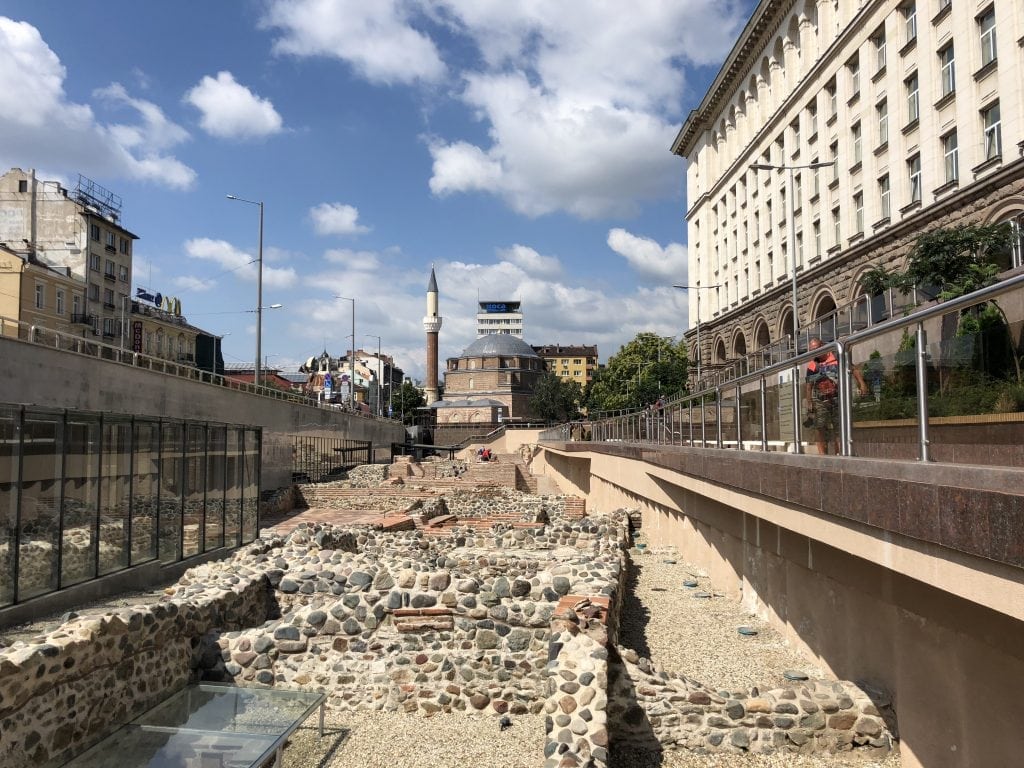
The Ancient Serdica Complex opened in April 2016 amidst protests regarding the quality of the restoration. Although the remains date back to the 4th century, they were uncovered from 2010 to 2012 during the construction of the city’s metro line.
Room for Improvement in strategy for Tourism Development
However, things have been slow to get going and without clear direction. Zhelyazkov of Central Hotel Sofia highlighted that professionals in the travel industry had been meeting for more than 15 years to get labels for tourists around the city, and they have just been implemented in the past three years. “Every time, [the government says] we don’t have enough money for the budget,’” he said. “They have a focus in tourism, but I think the focus could be more.”
In an interesting study, Sofia University’s Vasil Marinov, Elka Dogramadjieva, and others interviewed 173 accommodations establishments and 35 travel agencies to assess the success of current tourism infrastructure in Sofia. Many respondents found there to be a considerable delta between the development potential of a certain area of tourism versus its current status, particularly for ski tourism, “green” tourism, heritage tourism, and wellness tourism. In the chart below, the higher the number, the greater the delta between the development potential versus the current state assessment for a given category of tourism.
Source: Marinov et al. “Tourism product development and marketing of Sofia metropolitan area: business perceptions and priorities.” January 2015.
The problem appears to lie in the fact that there is currently no clear vision or strategy for tourism development in the city being implemented. In one chapter of the book Traditions and Innovations in Contemporary Tourism, authors Elka Dogramadieva, Vera Nikolova, and Radenka Mitova note there was originally one tourism strategy that referred to the period 2006 to 2011, and upon publication of the paper, an updated strategy following 2011 had been “delayed several times.” While a “Strategy for the Development of Sofia as a Tourist Destination 2017-2030” was finally developed and adopted by the municipality in October 2017, it appears no process or strategy has been officially put into motion.
While I recognize there is work currently being done by the municipality, it seems haphazard and without consideration for how best to celebrate all that Sofia is and all of the opportunities that are available to visitors. I could feel it simply as I walked around — I’d walk by incredible Roman ruins with no signs in English, journey through a modern metro station to cross the street, watch trams dating back to the Communist regime chug slowly along, do my best to avoid the construction that kept the park closest to where I stayed, Crystal Garden, closed essentially all of July, and pass by broken, abandoned buildings that haven’t been touched since being bombed during World War II.
“They do emphasize construction, because the infrastructure is not really good,” noted Grahliova of Arena di Serdica, “[But] I think they have other priorities in mind [than tourism].”
Developing a Vision for Tourism in a Colorful Destination
The municipality has the incredible opportunity today to define a vision for how tourism can sustainably develop, where the economy, locals, and visitors all benefit. “We have a long way to go, and it depends on the government,” Grahliova of Arena di Serdica noted.
An ultimate strategy should encompass necessary infrastructure, better service, and appropriate promotion of what the destination has to offer.
When it comes to tourism infrastructure, interviewees of the same Sofia University study also highlighted an ongoing need for restoration of heritage sites and other areas of leisure and entertainment as well as more easily accessible information. “We have three tourist information centers,” Zhelyazkov of Central Hotel Sofia explained. “Two of them are underground in the metro stations. Only one is in a garden in the city center.”
Source: Marinov et al. “Tourism product development and marketing of Sofia metropolitan area: business perceptions and priorities.” January 2015.
I learned during my time in Sofia that there are numerous areas not open or available to the public, but they could be restored in such a way that would make it easier for visitors to enjoy the city. An example of this would be the tunnels below the Hotel Rila Sofia, which was originally the official hotel for the Communist Party during its regime, which apparently connect the property to various official buildings in the Largo area. Just like visitors are able to enjoy the Churchill War Rooms in London, visitors should be able to learn about Sofia’s underground history, what it was like, and what can be learned from it, but that is not easy to do currently.
Instead of demolishing buildings, such as the mausoleum mentioned earlier, turn them into museums. Instead of keeping areas reminiscent of the past closed to the public, open them up for better understanding. Instead of putting up walls, break them down.
Aleksandar Dolapchiev, sales and marketing manager for Hotel Rila Sofia, also believes more work with regard to service needs to be done. “Service in the restaurants, the hotels, in transportation, and the call centers,” he noted. “If we can offer service with these competitive rates [Sofia is a relatively cheap destination], we’re definitely going to kill it.”
In addition, appropriate promotion of Sofia and all that it has to offer appears to be very much needed. “We need to promote more,” Dolapchiev of Hotel Rila Sofia emphasized. “Because right now, … people outside Europe don’t know Bulgaria, but people in Europe know pretty bad stuff about Bulgaria, because we have a lot of economical problems.”
The Sofia University study indicated a need for better maintenance of tourism websites, more active e-marketing, and more easily accessible information for tourists.
Source: Marinov et al. “Tourism product development and marketing of Sofia metropolitan area: business perceptions and priorities.” January 2015.
I recognize that an effective strategy and vision for the management and development of tourism will take some time and more clarity and stability out of the government. “We need more and more [consistency] and stability from the government,” Dolapchiev of Hotel Rila Sofia commented. “I cannot focus on the [hospitality] market right now, [because] we need to focus more on the changes in the tax law and legislations and other things that are changing constantly.”
Sofia may have had to grow up faster than some, but the city now needs to step up and take responsibility for setting up a better system and structure for tourism. Because when the time comes that the “undiscovered” aspect wears off, and I believe it will sooner rather than later, the city will need a strategy in place to not end up being the next Barcelona or Lisbon.
Perhaps it begins when the government, businesses, and locals alike reach a communal understanding that they have a beautiful city that’s worth the attention that other destinations are currently receiving too much of. Every time I mentioned to a local where I was from, they seemed both surprised and excited to see me, asking in awe, “What are you doing here?”
Let me answer that question by painting a picture for you of Sofia, Bulgaria.
I was there for its hiking, like the Seven Rila Lakes, Vitosha Mountain, and Musala, the tallest peak in the Balkans.
I was there for its natural wonders, like Devetashka Cdave, the Belogradchik fortress, and Magura Cave (complete with ancient cave paintings).
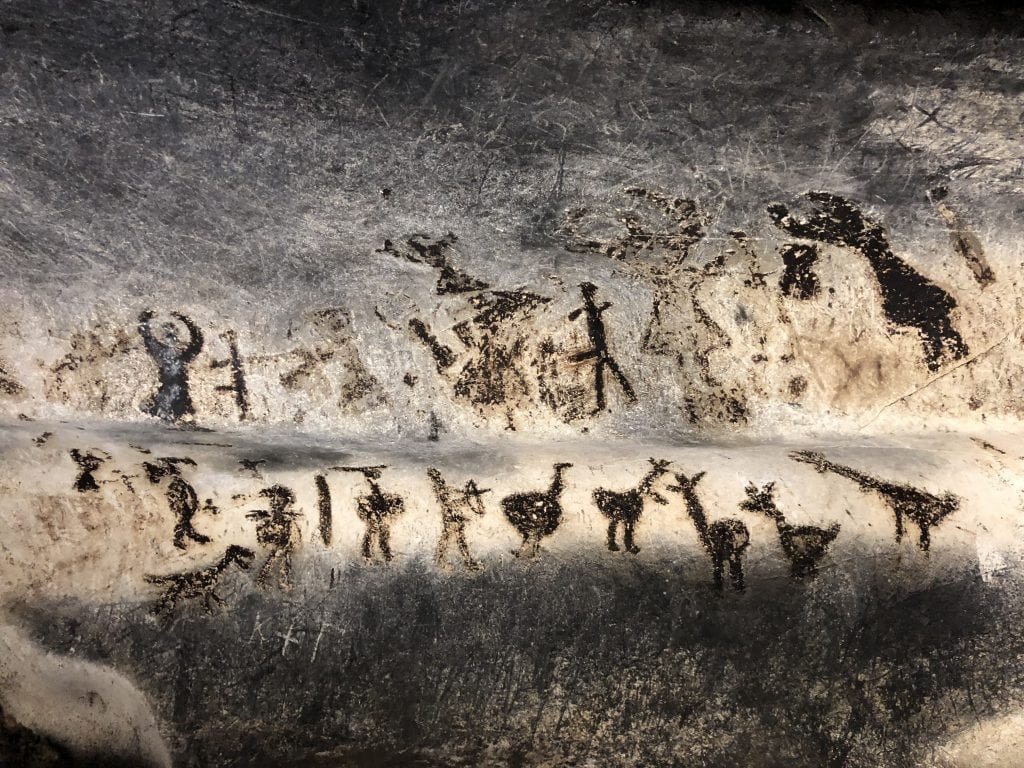
Ancient cave paintings in Magura Cave dating back to the Paleolithic, Neolithic, and Bronze Age time periods.
I was there for its wellness attractions, like yoga and meditation retreats at Bakyovo Retreat Center and 700 mineral and thermal springs all over Bulgaria.
I was there for its awesome gastronomy, like that of Made in Blue, The Little Things, One More Bar, and 5L Speakeasy Bar (though you’ll have to ask a local how to get into that one!), just to name a few.
I was there for its arts and culture, like the National Gallery of Art or Sofia Opera and Ballet or the Ivan Vazov National Theater, both of which often have productions featuring English subtitles.
I was there for its incredible history, which I wanted to learn about and better understand.
Sofia isn’t black and white. It’s one of the most vibrant, colorful destinations I’ve ever seen.
The Daily Newsletter
Our daily coverage of the global travel industry. Written by editors and analysts from across Skift’s brands.
Have a confidential tip for Skift? Get in touch
Tags: bulgaria, climate change, data and discovery, eastern europe, skift on the road, sustainability, tourism
Photo credit: The Alexander Nevsky Cathedral, with only a handful of travelers visiting on a gorgeous Saturday in July, stands powerfully as a symbol of Bulgaria’s vitality, hundreds of centuries in the making. Rebecca Stone
